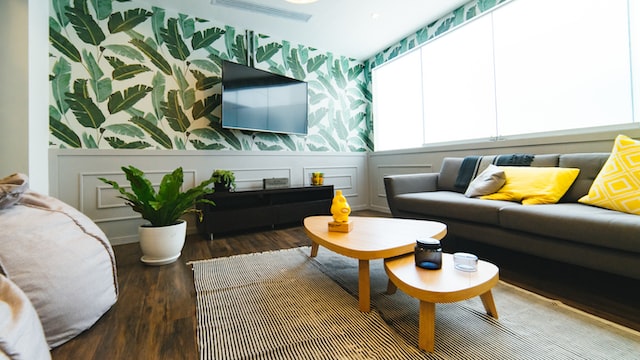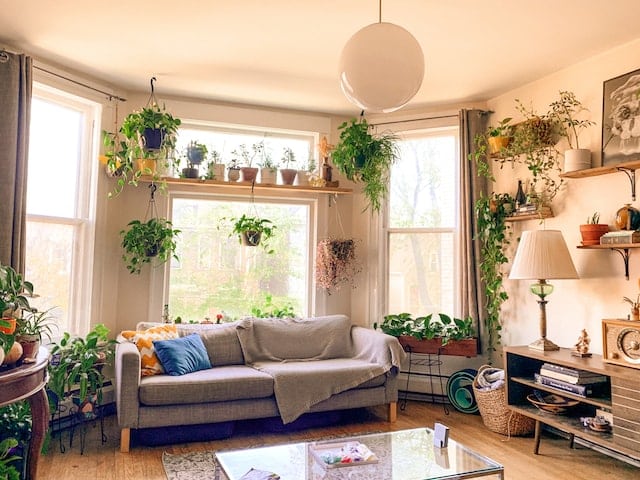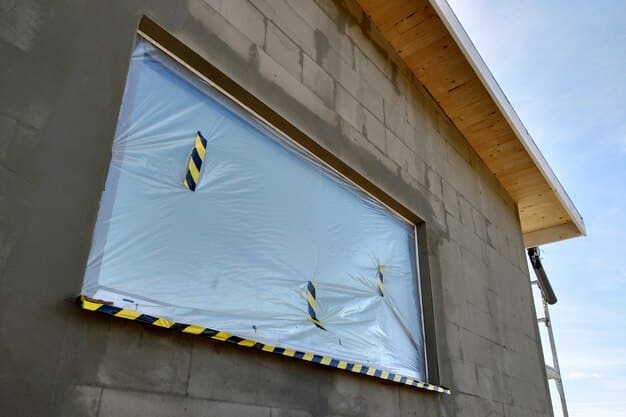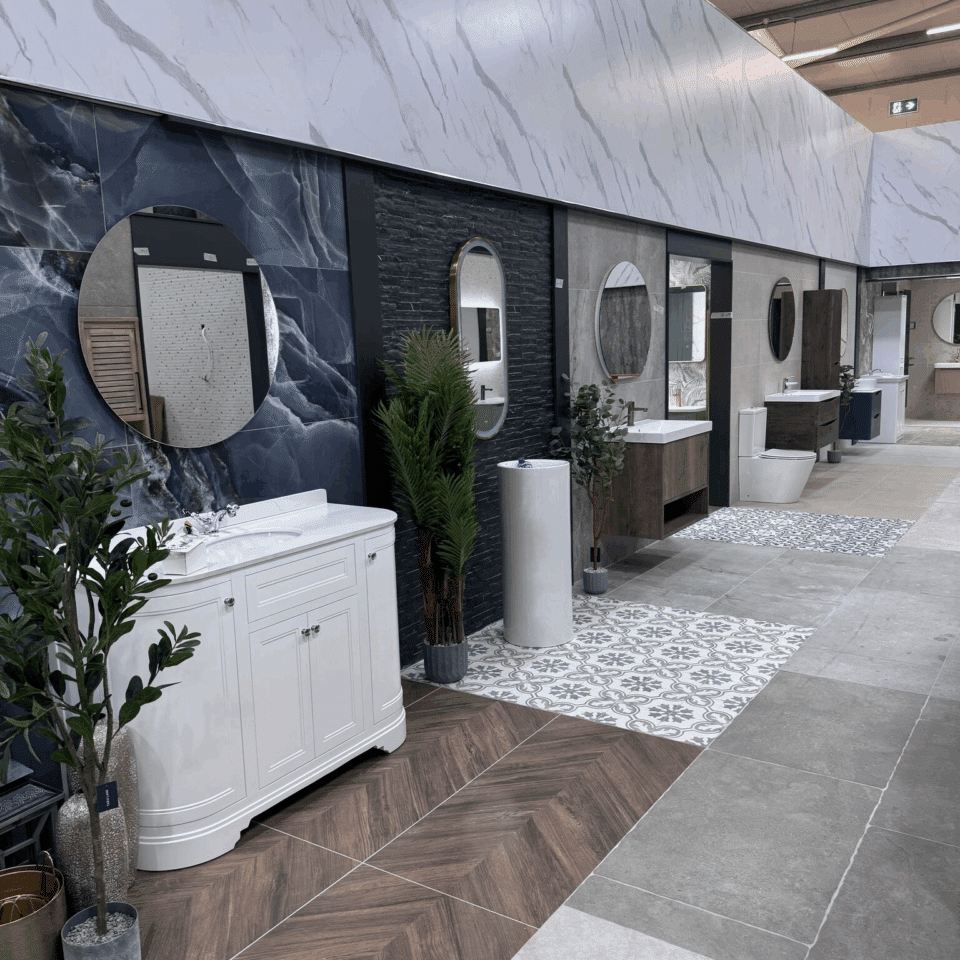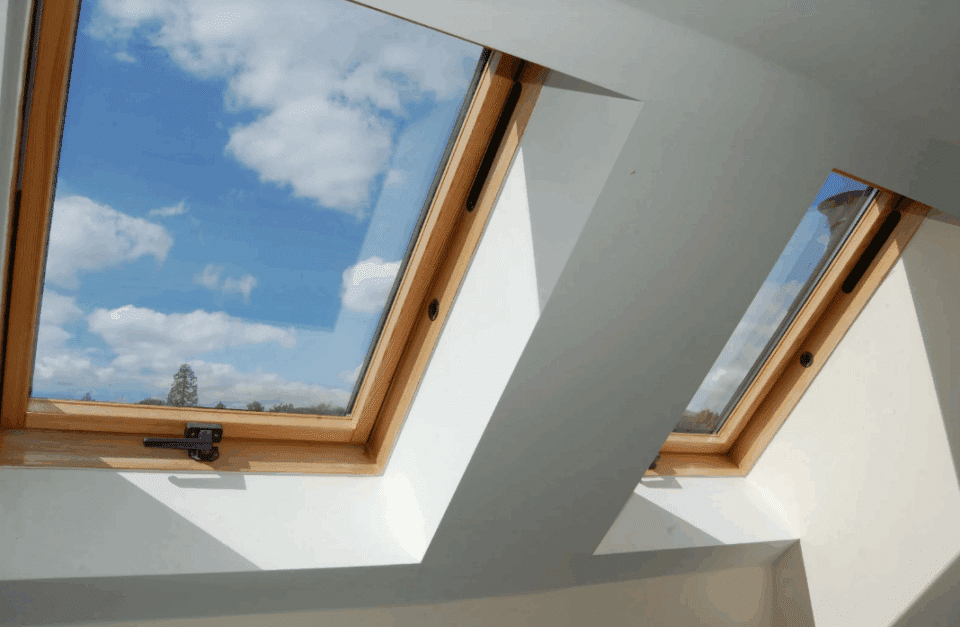Biophilic design is about rediscovering the intuitively obvious – natural interiors and finishes. Here are ways to go green in your home in Ireland.
In this article we cover:
- What is biophilic design
- How it helps boost your health and lower stress levels
- Origins of the design movement
- Step by step biophilic house design guide
- How to create spaces that embrace nature
- How to reconstruct the benefits of nature in your interior design scheme
With the stress of modern day living, designing our homes in a way that enhances our health and wellbeing has become increasingly important. One way to achieve this is through the back-to-nature approach of biophilic design, which is about rediscovering the intuitively obvious.
It’s well known that we spend on average over 90 per cent of our time indoors, most of it at home, but did you know that children in the UK are now spending less time outside than prison inmates? That’s according to a survey conducted by Persil last year which found 74 per cent of five to 12 year-olds spent less than 60 minutes playing outside each day. Inmates get at least an hour.
In tandem, pressures of our modern lifestyle and employment are taking their toll with higher levels of stress and anxiety-related illnesses – according to the World Health Organisation, depression is set to be the number one global disease burden by 2030.
To tackle these issues, a relatively new design ethic called biophilic design has emerged. The biophilia hypothesis suggests that we have an innate tendency to seek connections with nature and other forms of life because our brains are hardwired to them.
When we are in natural or biophilic environments, our mood, creativity, productivity and self-esteem function at their optimum. This is due to out brain’s ability to process sensory information present in natural environments with such ease that they expend little energy in doing so, and are given a chance to rest our cognitive facilities and allow them to recharge.
When we get stressed, tired or down, our brain, bodies and moods are affected. Being in a natural or biophilic environment acts as a trigger to restore our health baselines. This can be seen through a drop in both blood pressure and stress hormones. Therefore biophilic design can be thought of as a salutogenic approach to health.
When we talk of applying biophilic design, we talk of doing so in patterns, much akin to Christopher Alexander’s work A Pattern Language. Patterns are not formulas, they are meant to guide and inform. Alexander defines patterns as: “…..a problem which occurs over and over again in our environment, and then describes the core of the solution to that problem, in such a way that you can use this solution a million times over, without doing it the same way twice.”
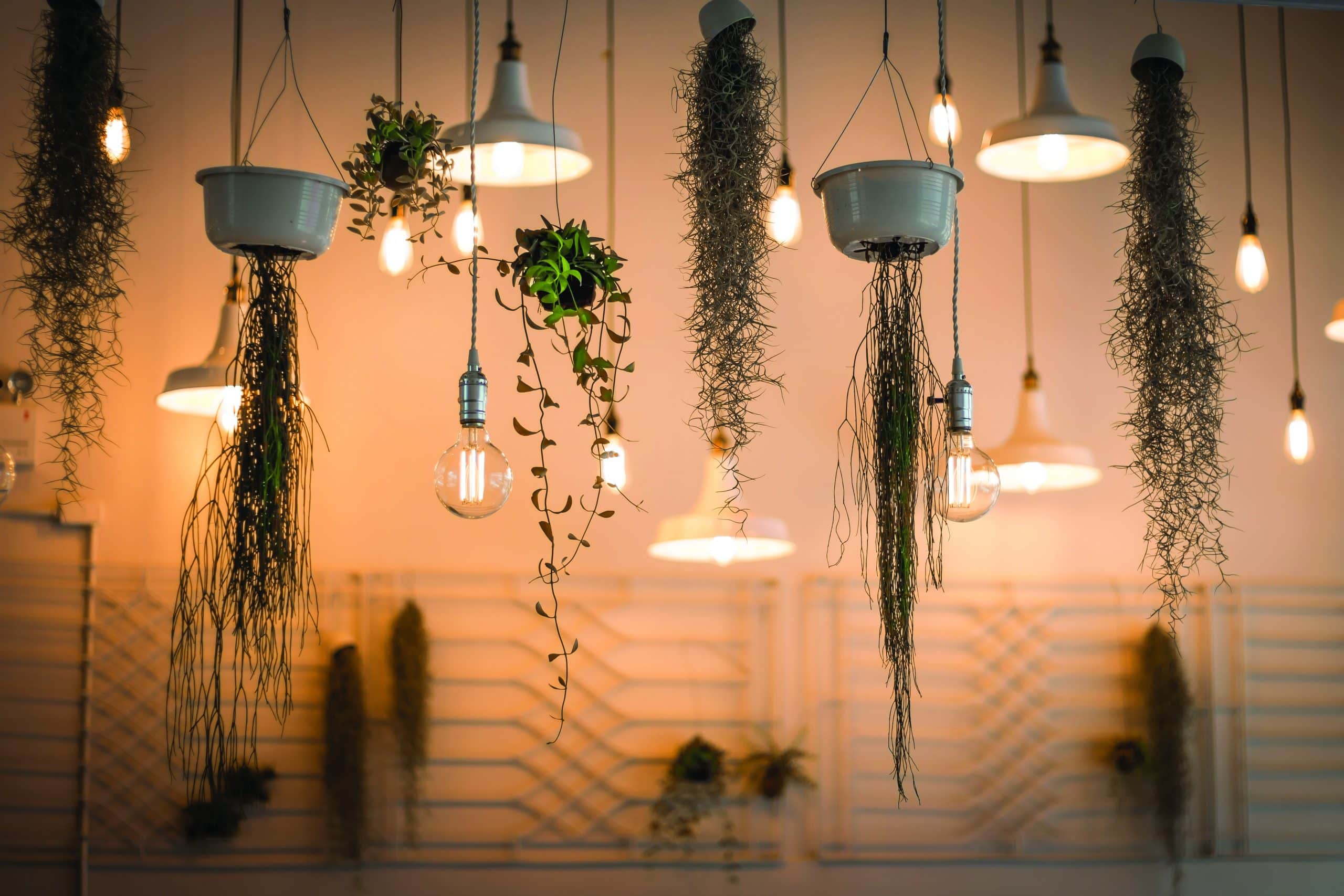
Out of Africa
Biophilic design embraces various design principles, one of which is the Prospect and Refuge architectural theory. Effectively, the idea is that human beings favour places that have the spatial characteristics of the African Savannah.
‘Prospect’ offers an unimpeded view over a distance through one or more spaces. When implementing this in the home, allow for views through multiple spaces at once with the help of low partitions and elevated viewing points.
This has been shown to increase feelings of safety and relaxation as it is easier to survey the surrounding environment. Prospective views should have focal lengths of at least 6m, distances of 30m are ideal. Few houses span 30m, which is why incorporating external views becomes important. Aim for them to contain bodies of water and tree groupings.

‘Refuge’ is a space that allows for withdrawal, away from the hustle and bustle of busy spaces. It protects an individual from all sides, while allowing for external views. A house is effectively one big refuge, allowing for prospective views over the back garden and surrounding landscape. But within the home lies numerous opportunities to create additional spaces of refuge, quiet corners and incidental spaces ‘away’ from the main congregation areas of the house.
This can be achieved through the correct positioning of a high backed chair overlooking the garden, a covered walkway, or a porch. These are spaces for reflection and incorporate varied levels of light and temperature, through the use of lowered ceilings, adjustable blinds and partitions.
When combined with prospect, refuge delivers a much stronger, positive response than when it’s achieved on its own. High ceilings will enhance prospect while low ceilings will enhance refuge so a biophilic house design will generally go for a combination of both.
Biophilic house design guide
From the first site visits and surveys, existing (natural) biophilic elements should be identified on site, e.g. a prospective view over a valley, a natural water course/water body, a woodland edge, etc. Each should be assessed on how they can be incorporated, maintained and/or enhanced.
Sustainable design principles are all incorporated into biophilic design, e.g. house built relative to its environment and to the sun’s movement, radiant surface materials, etc.
Another key point to remember is that it’s not all about the house. Your garden will provide the most immediate external views from your interior. The use of ornamental grasses and other shrubs will help create movement which will catch your eye and engage you.
With a retrofit, you’ll already be dealing with an established sense of place or character, but this can work to your advantage. Biophilic design must nurture a love of place, the way to achieve this is unique to each setting and individual.
Here are three ways to get started on your design:
1. Plug into nature
Our brains pick up on the smallest incidental ephemeral experience of nature, such as swaying grasses in the wind or a bird taking flight. We even receive benefits from nature when we seek to experience it, an impulse that can be triggered by a sound (water, wind, etc.). We are so hardwired for nature, we will relax in a natural environment even when we’re not trying.
While biophilic design is more than tokenistic greenery, the inclusion of plant life in the home can have dramatic effects on the feel of the space and the occupants’ health. These responses are further strengthened where bodies of water are present, especially when it is possible to physically touch it. Combining all of these will create a strong restorative response.
Furthermore, using materials that reflect the local geo-ecology of the site will create a bond between your home and its landscape, giving it a high degree of legibility. By incorporating existing ecosystems (or establishing new ones) or using natural stone from the area for example, you can make occupants aware of natural processes, including seasonal and temporal changes that are characteristic of a healthy ecosystem.
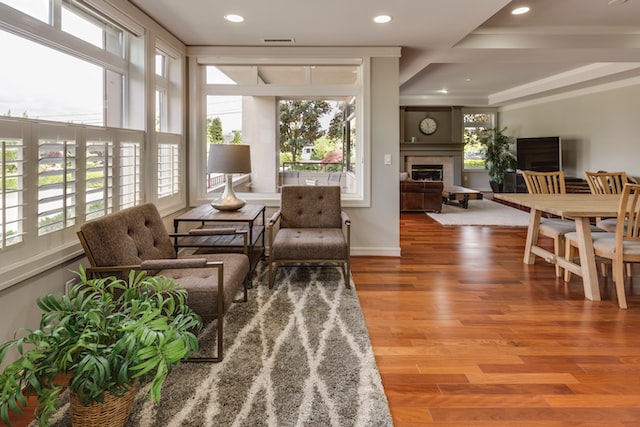
With the strategic use of windows you can embrace the nature that surrounds your home to frame the views of trees swaying in the wind, or, inside by constructing a green wall for a direct experience of nature. Living walls, or vertical gardens, are bought as DIY kits or can be professionally installed.
Daylight is of course also a key consideration, especially when you take into account seasonal changes and varying intensities of light. In tandem with daylight, shadows can be used to grab people’s attention, through movement of light and dark along a surface (such as dappled light under the canopy of a tree or light reflecting off a body of water onto a ceiling or wall).
These tend to create fractal shapes and patterns, which attract and hold our attention because our human brain easily processes them. As seen above, the brain performs ‘better’ when it deals with things that require little effort, and fractals are one of these things. A school of thought says this is because the brain is hardwired to repetition, in this case of the geometric patterns.
2. Create micro restorative spaces
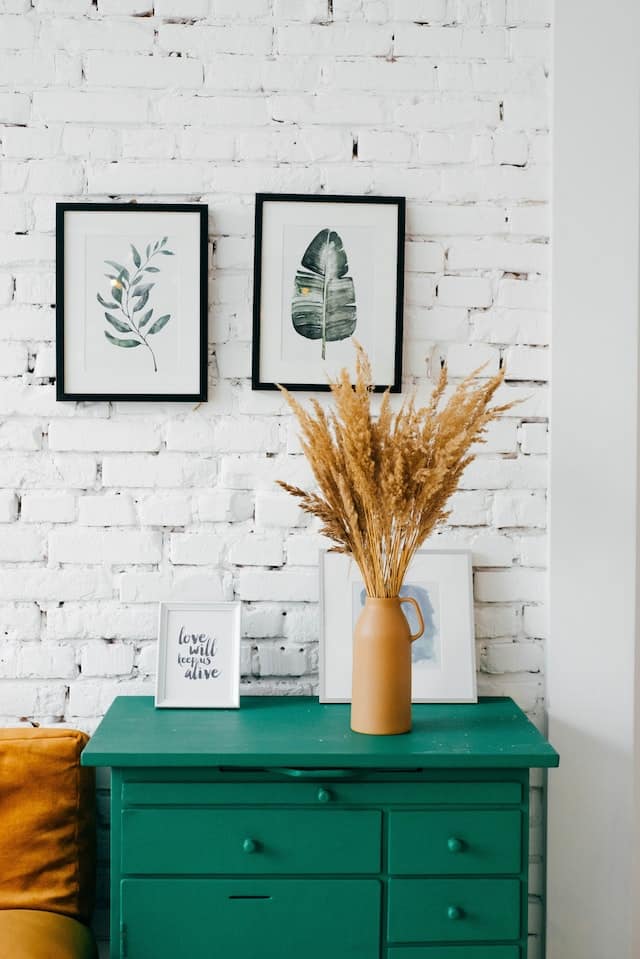
Biophilic design and natural environments give the impression that they are demanding of space, cost and maintenance but this isn’t necessarily true. For instance, in a 2007 study by Richard Fuller et al, it was found that psychological mood increased with higher levels of biodiversity and not with increases in vegetative areas. Variety is the spice of life.
Secondly, the effects of natural environments, no matter how small or short the experience, build up over time to ‘trigger’ a restorative response. These individual experiences are classed as being ‘micro restorative’.
You can integrate multiple micro restorative spaces around your home with a well framed view, an interior green wall, a water feature, biomorphic patterns in the decor/wallpaper, use of natural materials in the furniture, rooflights, etc.
These micro restorative spaces should be placed along key traffic routes and adjacent to congregation spaces.
3. Reconstruct nature
When direct experiences of nature are not feasible, due to space restraints (as occurs with retrofits), lack of soil, water or associated maintenance costs making it unfeasible, we can use simulation.
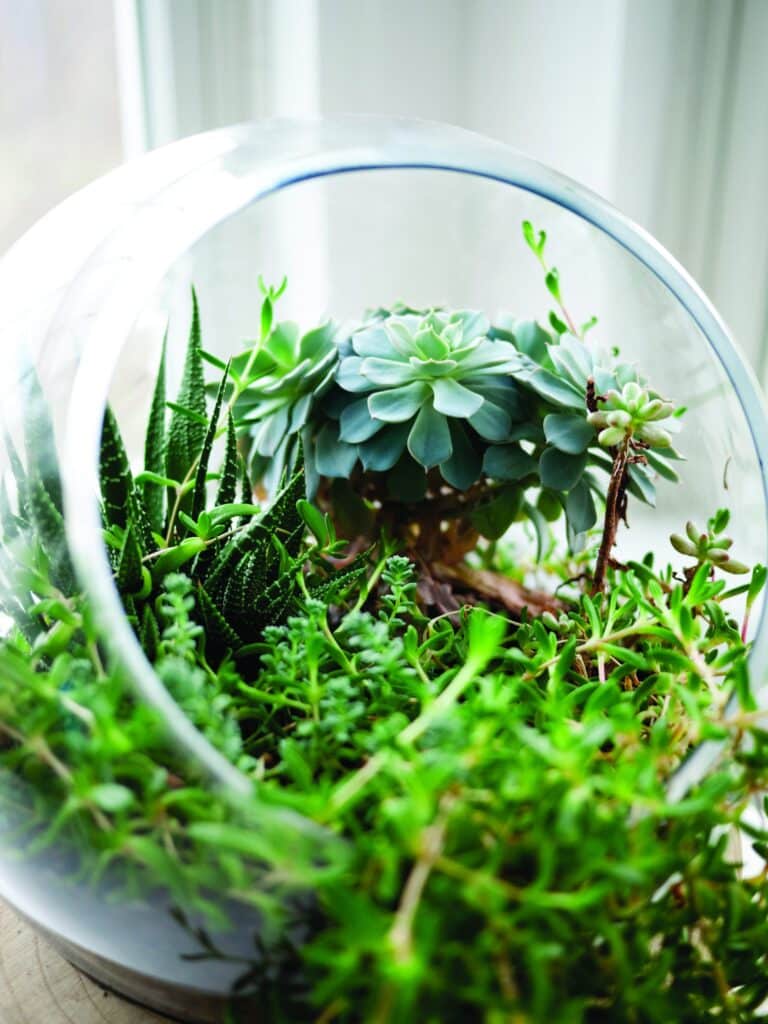
Indirect evocations of nature or natural analogues can be symbolic or representational of patterns and shapes found in nature. They are one degree of separation from actual nature.
These can include ornamentation, artwork and use of natural materials, such as wood and stone. They can be integrated into the decor with fabrics, carpets, window designs and even masonry. Billowy fabric or screen materials that move or glisten with light or breezes. Plant oils work too. Another method of simulating nature is through ‘Techno Biophilia’ with screensavers, digital representations of nature and recorded natural sounds, to name a few.
While they don’t elicit as strong a restorative reaction as actual, direct experiences of nature, they still trigger a response that can enhance mood and productivity.
